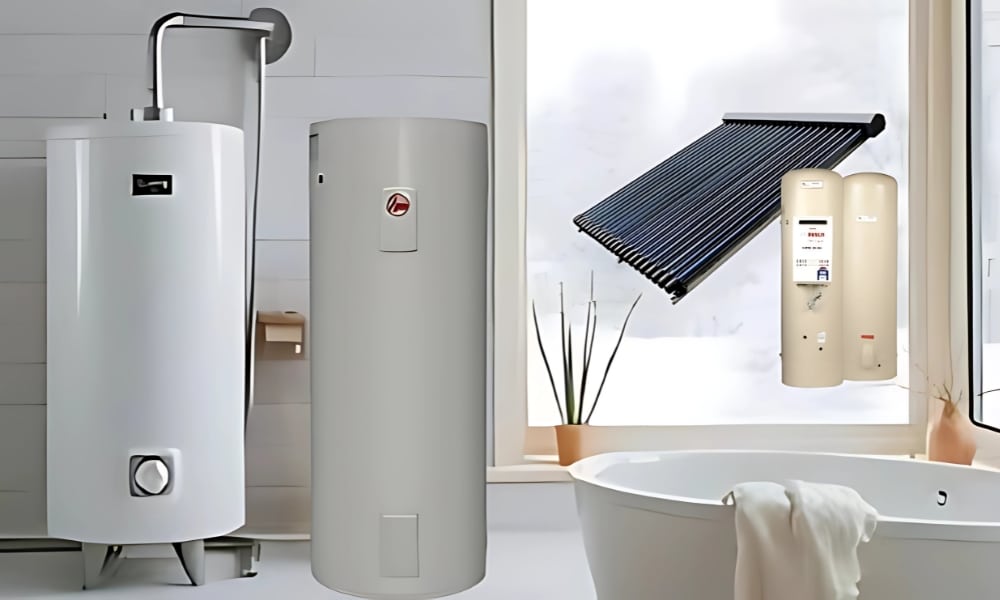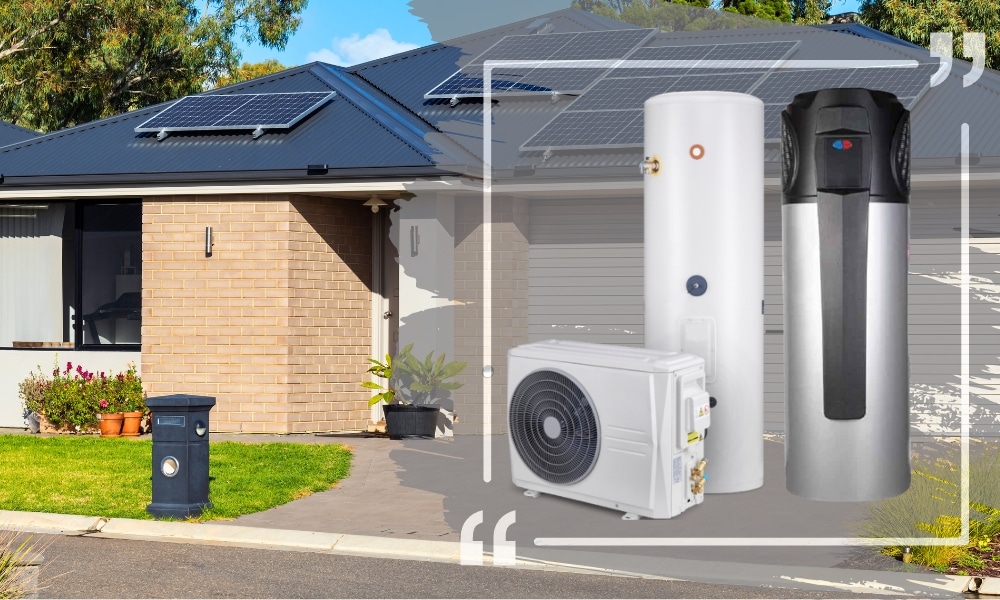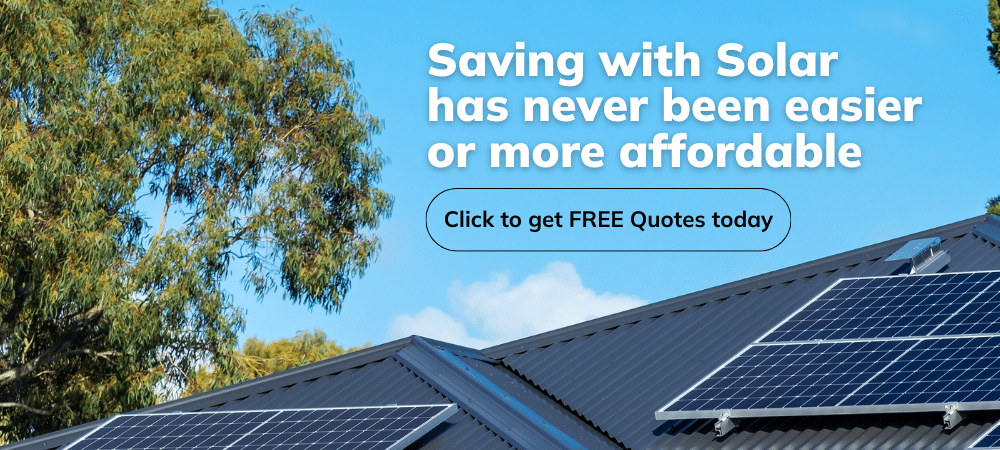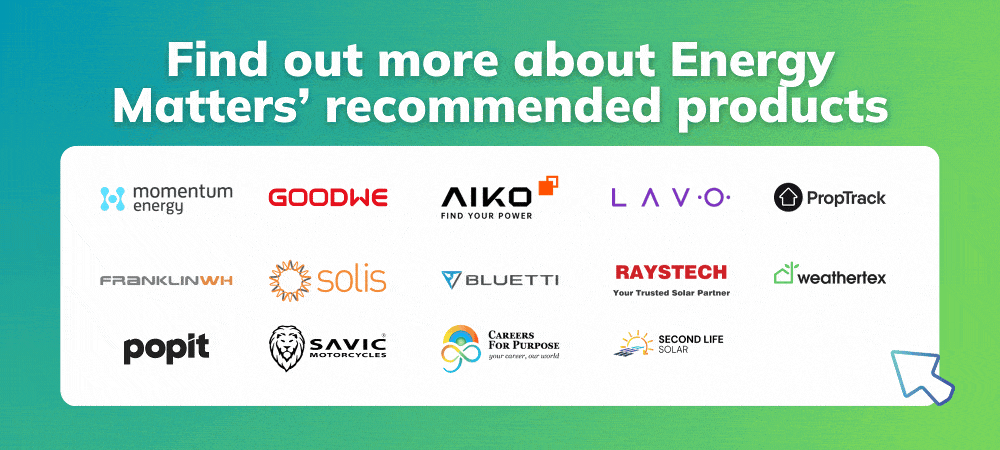We receive quite a few enquiries regarding stainless steel water tanks compared to vitreous enamel–lined hot water tanks when used in solar hot water applications. The following are a few points to help you in your decision as to which hot water tank suits your needs and situation.

On this page
Considering the environmental and cost benefits of solar hot water systems, it’s essential to explore your options thoroughly. Many factors, including the choice of water tanks, play a role in optimising your solar setup. If you’re curious about integrating solar energy into your home, Energy Matters offers a hassle-free way to gather information tailored to your needs. Feel free to explore and get FREE solar quotes and start the transition to sustainable energy solutions.
Did you know Energy Matters is Australia’s largest renewable news, blog and educational resource? Subscribe to Energy Matters’ weekly newsletter and keep updated even with incentives, rebates and recommended solar product offers.
Solar-rated tanks and glass lining
Solar–rated glass–lined tanks have a significantly thicker vitreous enamel lining than a standard mains pressure hot water heater, due to the high temperatures experienced from the return line. It can withstand very high to boiling water temperatures under pressure. Vitreous enamel in standard water heaters dissolves above 70 degrees.
Stainless steel hot water tank strength
Stainless steel water tanks are only as strong as the seam welds. However, they generally have a ten–year warranty over the standard five–year warranty (minimum required by law) of glass–lined tanks. They also cost, on average, $300-$400 more than a glass–lined version.
Water quality
The poorer the water quality, the stronger the case to move away from stainless steel tanks. This is because impurities in the water can eat away at the silver in the weld, causing pinhole leaking and eventual failure. While stainless steel tanks have longer warranties, no manufacturer will honour a warranty if the TDS (Total Dissolved Solids) of the water exceeds 600 ppm (parts per million).
Anodes and hydrogen production
Glass–lined tanks have a magnesium sacrificial anode that ensures potable water quality. This makes sure the water is drinkable by attracting the impurities away from the surrounding water supply. The anode can knock against the glass and electric element, causing “hot spots” on the element, or glass cracking/crazing, if in transport while lying down. They must be stored and transported standing upright.
The release of hydrogen gas by an anode can sometimes occur if the water is not in use for a long period of time. Small quantities of hydrogen are produced that generally remain in solution and flush away as hot water is drawn from the tank. Depending on the water quality and the area where the water heater installation is, there may be a degree of hydrogen buildup in the tank if the water heater has had no use for two or more weeks.
An aluminium anode is appropriate if your water supply is of poor water quality in order to extend the life of the tank. You can request a “hard water” aluminium anode to be fitted to Aquamax glass tanks as part of an Apricus solar hot water system. If the order goes through Energy Matters, there is no extra charge.
Anodes aren’t really an issue with rainwater tank water. But they are definitely a recommendation for use with bore water or poor water quality. Melbourne and Sydney water is of a good to very high quality. Adelaide is of very poor quality. Tasmanian water is regarded as the best in the world!
Purging hydrogen from your hot water heater
However, even with a stainless steel hot water tank, if water is not in use for two weeks, you will have some hydrogen build-up. The indication for this is the spurting of a hot water tap when it is first opened.
To combat hydrogen build-up, all water heaters have a pressure and temperature relief valve fitted to Australian Standards. Simply pull the lever and “purge” the tank for 30 seconds if you have been away for two weeks or more. This will dispel any hydrogen gas leeched from stagnant water.
If the system is in use daily, the hydrogen does not separate from the oxygen in the water molecules, and this does not occur. Regardless, all tank manufacturers recommend you purge a system at least once every 6-12 months.
Exploring the benefits of stainless steel and glass-lined hot water tanks
When considering a new hot water tank, the choice of construction material is crucial for its longevity and performance. The options include high-quality stainless steel tanks and durable glass-lined alternatives, each offering unique advantages for your hot water needs. These robust tanks guarantee a reliable supply of heated water for your home.
Understanding your hot water options: Beyond traditional tanks
Are you considering an alternative to traditional solar hot water systems? If you want to pair your steel water tanks with a highly efficient heating system, consider exploring solar heat pumps and a solar panel hot water system.
Consider solar heat pumps for energy-efficient water heating
Solar heat pumps are innovative systems that use electricity and refrigerants to extract heat from the ambient air, providing a consistent hot water supply even when solar radiation is limited. These systems perform exceptionally well in cooler climates and do not require direct sunlight, making them an ideal match for stainless or glass-lined hot water tanks. By absorbing ambient heat from the air and transferring it to the water, solar heat pumps offer an eco-friendly and cost-effective alternative to traditional heating methods.

Learn more about the benefits and how they can significantly reduce energy consumption on our dedicated page for solar heat pumps.
Solar panel hot water system
While steel water tanks, especially those constructed from stainless steel, offer excellent corrosion resistance and durability, it is essential to understand how solar energy can be used to heat your water directly. A solar panel hot water system captures the sun’s energy through solar collectors to directly heat water stored in a tank. To better understand how this process functions and the various configurations available, visit our informative section on solar panel hot water systems.
Another key term you might encounter is a hot water cylinder, which refers to the insulated storage tank holding heated water. Whether you choose a stainless steel tank or a glass-lined option, the hot water cylinder is vital to your hot water system, ensuring heat retention and efficient delivery when needed.
Choosing between stainless steel and glass-lined hot water tanks
When selecting a reliable hot water tank for your home, understanding the difference between stainless steel and glass-lined options is essential. A stainless steel water tank is renowned for its durability, corrosion resistance, and extended lifespan, while glass-lined models are more affordable and offer insulation. Both hot water cylinders serve the same purpose, but your location, water quality, and household needs will influence the best choice.
Do you have other questions about choosing a water heater tank best suited to your solar hot water needs? Contact one of our friendly team for no-obligation expert advice before you buy. Don’t forget, generous solar hot water rebates are still available!
Now is the perfect time to switch to solar energy, especially in the solar system in Brisbane. We recommend obtaining up to 3 solar quotes to ensure you secure the best deal and choose the right solar installer in the area. This will guarantee a solar system that meets your energy needs.











































